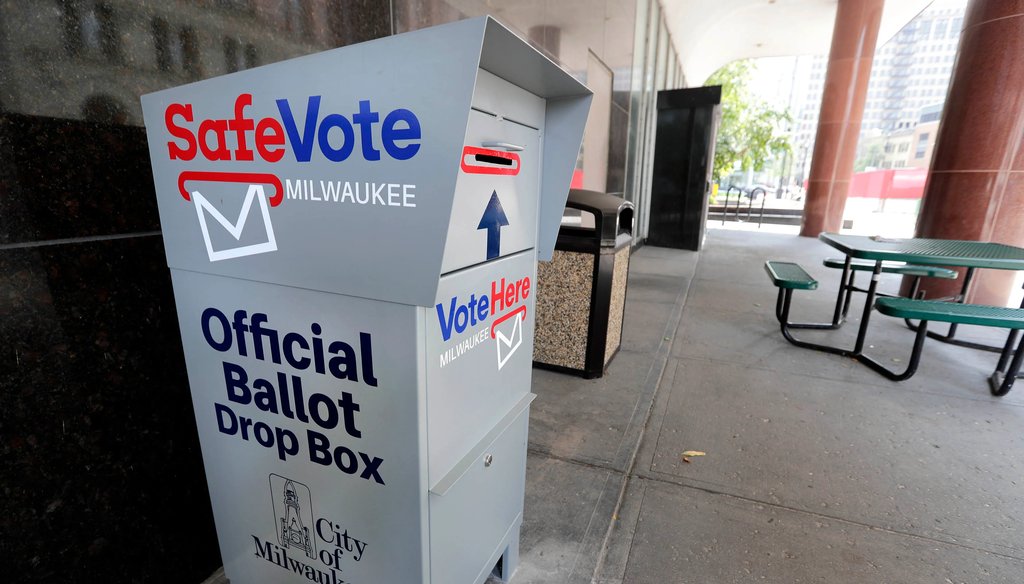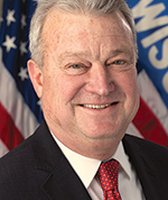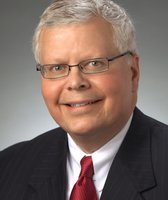Get PolitiFact in your inbox.

A ballot drop box sits outside City Hall in Milwaukee ahead of the 2020 election. (Rick Wood / Milwaukee Journal Sentinel)
If Your Time is short
-
In the 2020 elections, well over half of voters used early voting options, both nationwide and in Wisconsin.
-
That percentage has dropped to about 25% or 30% in three Wisconsin elections in 2022, 2023 and 2024.
-
Although early voting could increase in a presidential year like 2024, it’s still a lot of ground to make up, at least in Wisconsin.
At former President Donald Trump’s two rallies in Wisconsin this year, voters have heard mixed messages on voting early.
Republican leaders from the state — including U.S. Sen. Ron Johnson and party Chair Brian Schimming — have urged supporters to "bank" their vote by using mail-in ballots or early voting locations.
Trump, however, hasn’t taken the same tone, continuing to cast doubt in the integrity of absentee voting, especially in Milwaukee.
At his May 1 rally in Waukesha, Trump called for "one-day voting using paper ballots" — unlike the several days of early, in-person absentee voting allowed under Wisconsin law.
Michael Whatley, chairman of the Republican National Committee, was asked about those different messages and whether he is pushing for early voting on WISN-TV’s "Upfront" on May 5.
"Over 50% of all voters are going to be voting before Election Day this cycle," Whatley said, saying early voting would help the party be more efficient and use its resources to reach people who haven’t yet voted.
Whatley said the right message is encouraging voters to make a plan to vote and stick to it, whether that’s early voting, absentee voting or going to the polls on Election Day.
Absentee voting soared in the 2020 elections as the COVID-19 pandemic began, and many voters continue to prefer it years later. That’s why Whatley’s 50% number for 2024 caught our eye.
It’s impossible to predict exactly what the voting statistics will be in August or November. We won’t be rating Whatley’s claim, since those elections haven’t happened yet. But we can gauge whether Whatley’s estimate is on par, based on previous absentee voting data.
More than half of voters cast ballots early in 2020, same was true in Wisconsin
Asked where Whatley was drawing his 50% estimate from, the RNC pointed us to national numbers from 2020.
About 158 million people cast votes in the 2020 presidential election, a Federal Election Commission report shows. So that’s the total number of voters we’re looking at.
How many of them cast ballots early? About 69%, according to estimates from the U.S. Census Bureau. That includes 43% who voted by mail and 26% who used early, in-person locations.
In 2020, 31% voted at the polls on Election Day, according to the bureau.
In 2016, it was 60%. It was even higher in previous presidential cycles — 67% in 2012 and 70% in 2008. So, voting on Election Day was in a steady decline before, but then saw a massive drop in 2020.
Going back to Whatley’s estimate: Well over 50% of voters used early voting methods in 2020. That’s not to say it’ll be the same in 2024, but we’ll get into that later.
Before that, let’s take a closer look at Wisconsin’s early voting numbers in 2020, using a Wisconsin Elections Commission report on these trends.
In the April 2020 election, 62% of voters in Wisconsin cast ballots by mail, and around 13% used an early voting location. Just over a quarter cast ballots at the polls on Election Day.
In November 2020, voting at the polls increased back up to 40%. Around 41% used mail-in ballots and 19% used early voting locations.
So, that’s a slight dampening of the trend, even across 2020. But it’s still a much different picture than the elections prior to 2020, when between 73% and 89% voted at the polls, rather than using early methods.
A major question remains, and one that will provide context to Whatley’s claim: Did early voting stay popular after 2020, and is it still popular in 2024?
Early voting in three recent Wisconsin elections has dropped to about 25% or 30%
For this fact-check, we’ll continue to look at Wisconsin elections, especially since Republicans are focusing so much energy on early voting in the key battleground state.
In November 2022, when the governor’s race was on the ballot, about 29% of ballots were cast absentee, according to the state election commission’s spreadsheet.
Although much lower than 2020, that number was significantly higher than similar elections before it, including 22% in 2018 and 15% in 2014.
But absentee voting has trended downward in the last two years, commission data shows. In the April 2023 election, when a state Supreme Court seat was on the ballot, approximately 25% voted early.
In the most recent election in Wisconsin, held in April, about 25% voted early. That ballot had the presidential primary, two statewide referendum questions and local races.
All in all, early voting in these three elections was much lower than the peak in 2020, though none of them were presidential races. And the 25% area is still slightly higher than prepandemic early voting levels.
Our conclusion
Whatley predicted that "over 50% of all voters are going to be voting before Election Day this cycle."
As we said in the beginning, it’s impossible to predict what could happen in November, and therefore verify Whatley’s claim that 50% of voters will vote early.
His claim might be a bit of a stretch. In two of Wisconsin’s higher-turnout elections since 2020, early voting was about 29% and 25%. Last month, it was also around 25%. Those aren’t presidential elections, though.
That’s a significant drop from November 2020, when nearly 60% of ballots were cast early in Wisconsin. The pandemic was clearly a huge driver of absentee voting then, and it might not be the same this year.
Finally, we should note that we’re just looking at Wisconsin, and some states with high rates of mail-in voting could boost Whatley’s claim, which didn’t specify Wisconsin.
Overall, it looks unlikely Wisconsin will shoot back up to over 50% early voting, though it’s not impossible.
Our Sources
WISN-TV, 'UPFRONT' recap: RNC Chairman Michael Whatley 1-on-1 on convention, Trump, early voting push, May 5, 2024.
Republican National Committee, email exchange, May 8, 2024.
Federal Election Commission, Election Results for the U.S. President, the U.S. Senate and the U.S. House of Representatives, October 2022.
Wisconsin Elections Commission, November 3 2020, Election Data Report, Feb. 3, 2021.
Wisconsin Elections Commission, General Election Voter Registration and Absentee Statistics, 1984-2022
Wisconsin Elections Commission, Absentee Ballot Report - April 4, 2023 Spring Election, April 6, 2023.
Wisconsin Elections Commission, 2023 Spring Election and Senate District 8 Special Election Results, April 20, 2023.
Wisconsin Elections Commission, Absentee Ballot Report - April 2, 2024 Spring Election and Presidential Preference Vote, April 4, 2024.
Wisconsin Elections Commission, 2024 Spring Election and Presidential Preference Results.

















































